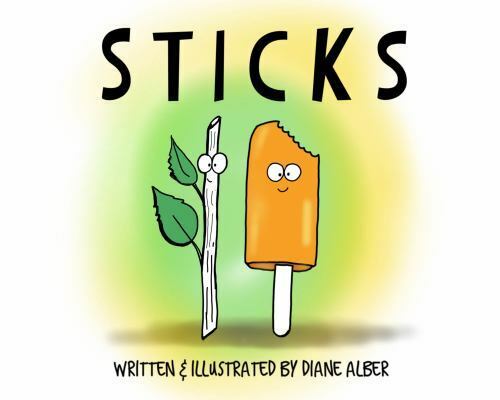SEL Read Aloud: Sticks by Diane Alber

Summary
Comprehension Questions
Six questions aligned to Bloom’s taxonomy for teacher’s to evaluate students’ comprehension
- Remembering: What did Twig, Pencil, and Brush have in common before they found their new roles?
- Understanding: How did Twig, Pencil, and Brush help Stick understand its potential?
- Applying: Can you think of a time when you felt like Stick but later found a new purpose or talent?
- Analyzing: What are the different emotions Stick experienced throughout the story, and what caused each one?
- Evaluating: What do you think is the most important lesson Stick learned?
- Creating: Imagine Stick decided to take up a different hobby instead of making art in the tree. What might it have done?
CASEL Discussion Questions
Five questions aligned to the CASEL competencies for teachers to foster an engaging discussion and foster social-emotional learning
- Self-Awareness: Can you describe a time when you felt like Stick, thinking you had no purpose?
- Self-Management: What actions did Stick take to find its new purpose?
- Social Awareness: Why was it important for Stick to meet Twig, Pencil, and Brush?
- Relationship Skills: How did Stick’s interactions with its friends demonstrate good friendship and support?
- Responsible Decision Making: What could have happened if Stick had decided not to listen to its new friends?
Design Thinking Challenge
Take students’ learning even further by incorporating the Imagineerz design thinking framework
Build a Multi-Purpose Stick Tool Kit
Understand
- Begin by reading “Sticks” by Diane Alba. Discuss the main issues Stick faces, especially its feelings of uselessness and its journey to discover new purposes. Focus on how Stick’s transformation and the encouragement from friends lead to Stick finding a place and purpose.
- Initiate a class discussion on the themes of the book, such as self-discovery, transformation, and the importance of support from friends. Explore questions like: What caused Stick to feel sad and useless? How did meeting Twig, Pencil, and Brush change Stick’s perspective? How did Stick find a new purpose?
Ideate
- Encourage students to brainstorm ideas for a practical and creative toolkit that could help Stick and other items like it (e.g., other sticks or objects) find new purposes. Prompt them to think about various tools and materials that could be included in the kit to help transform or repair objects, and give them new functions.
- Ask students to consider additional features that might help the objects stay organized and ready for their new roles, such as compartments for different tools, labels for each section, or a small guidebook with creative ideas and instructions.
Prototype
- In small groups or individually, students will create a prototype of their “Multi-Purpose Stick Tool Kit” using classroom materials such as cardboard, popsicle sticks, tape, fabric, and any other craft supplies. They should design their kit to include various tools and compartments that Stick and other items might need for transformation or repair.
- Encourage creativity in constructing the kits, including elements that could symbolically represent Stick’s journey of transformation, such as inspirational quotes, drawings of Stick’s new roles, or small badges for completed transformations.
Test
- Students will present their prototypes to the class, explaining their design process, how their toolkit works, and its intended benefits for Stick and similar items. Demonstrate the kit’s functionality by showing how it could be used to transform or repair a simple object.
- Gather feedback from classmates and teachers: Does the toolkit include all necessary tools for Stick’s tasks? Is it easy for Stick to stay organized and find new purposes? What improvements could enhance its functionality or make it more effective for Stick’s needs?
Read Aloud
Additional Resources
Copyright Notice
The image on this page comes from the book Sticks by Diane Alber. Copyright © 2019 by Diane Alber.


